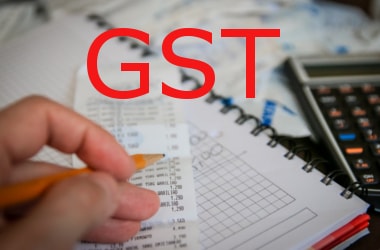
GST Rates - The benefits and The downsides
The much awaited Goods and Service tax slab is finally out. Basically, it is a destination based tax on consumption of goods and services and is proposed to be levied at all stages right from manufacture up to final consumption with credit of taxes paid at previous stages available as set off. It shall replace a number of taxes levied at various levels. Now that it is out and applicable, people are beginning to assess the number of benefits and downsides of GST depending on various goods and services.
Benefits1. The zero tax slabGoods and services of everyday usage are placed under the zero tax slabs which means no tax will be levied on them. The slab has products of general usage like Jute, fresh meat, fish, chicken, eggs, milk, butter milk, curd, natural honey, fresh fruits and vegetables, flour, besan, bread, prasad, salt, bindi, sindoor, stamps, judicial papers, printed books, newspapers, bangles, handloom, etc. Services like hotels and lodges with tariff below Rs 1,000 will also be tax exempt. Grandfathering service is also exempted under GST. This would lower the prices of these products which will be beneficial for consumers.
2. The higher tax slabThe 18% and 28% slabs have products and services that are either for luxury or that are harmful to health. These include tobacco products, aerated drinks and other such items. This will increase the prices of these products which could encourage people to consume them less frequently. Other luxury items like branded clothes and footwear also fall in this category.
3. Overall benefitMaking taxes clearer, making the system transparent and boosting make in India concept are some of the common benefits of levying GST. The products and services will be globally competitive and it will boost the economy to a great extent.
Downsides1. TechnologyMobile phones, laptops, computers as well as mobile phone bills are placed in the higher tax slabs which means the cost and taxes will increase considerably. These are trying times for the middle class of urban areas. Not everyone is able to afford a laptop which is an important medium for education these days right from high school. Higher prices of these will be troubling the youth to a great extent.
2. Sanitary productsThe government decided to put religious products of worship in the tax exempt slab because they are necessity according to the government but at the same time sanitary products like pads and tampons which is a biological necessity for all women, irrespective of religion and status, did not get a place in the tax exempt category. There was a lot of demands for making these products tax free from women all over the country but that does not seem to have caught the attention of the lawmakers.
3. The higher slabsSaudi Arabia, Singapore, Switzerland, Australia, Indonesia, South Korea, Japan, Canada, UK, Greece, Argentina and a lot of other countries have highest tax rates lower than ours. Even comparing with China, Pakistan and Bangladesh doesn’t get us any closer to the highest taxes of any of these countries. What makes our government think that we are doing far better than all these countries and should be paying more taxes on so called luxury goods that a developing India can do without?
4. Alcohol exemptionSo alcohol, the product that is supposed to be banned on highways and in Bihar gets a tax exemption but luxury items are deemed culprit. It is unclear why the government instead of putting these in the demerit list and levying higher taxes decided to keep it with necessary items like five petroleum products, viz. petroleum crude, motor spirit (petrol), high speed diesel, natural gas and aviation turbine fuel.
GST has its benefits which is unquestionable but there are definite disadvantages too that should be addressed.